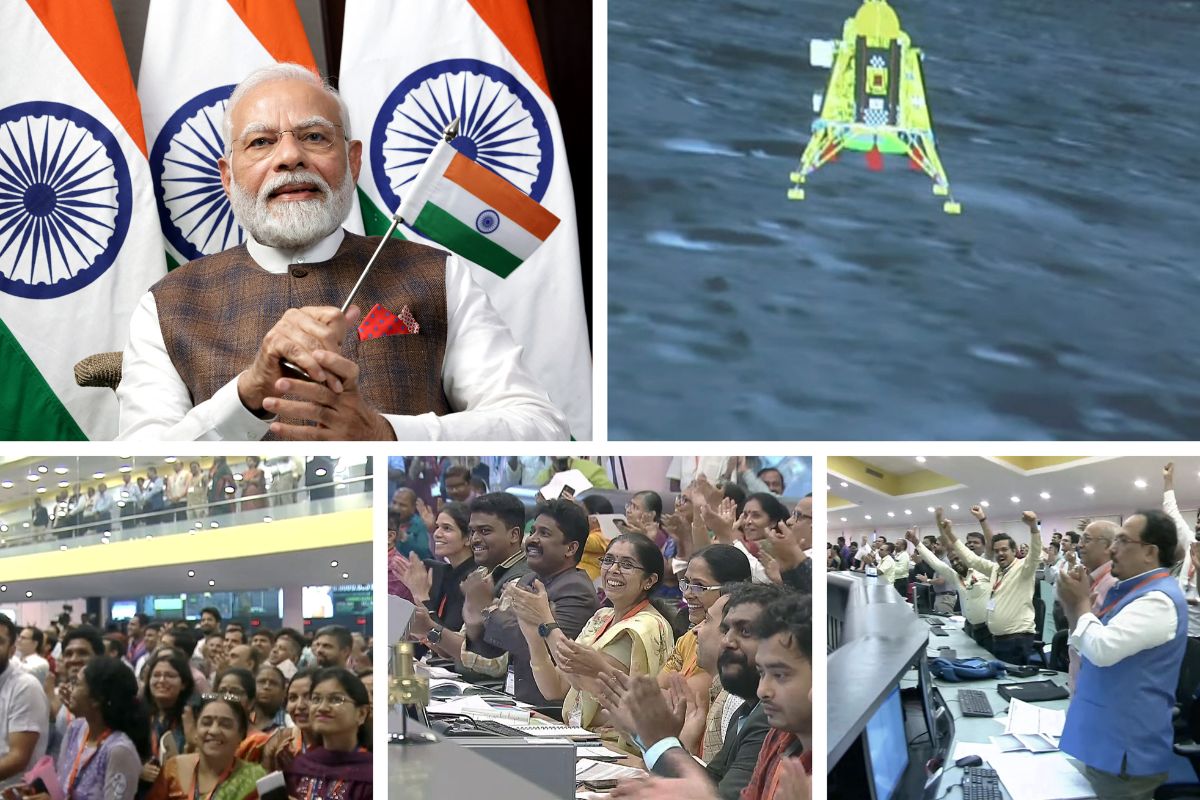77th anniversary of Poonch link-up with India celebrated
The 77th link-up anniversary of Poonch with the rest of India was on Friday celebrated by the Army and civilian population of the border region.
Now, India has earned a place in record books as the first country to touch down the south side of Earth’s only natural satellite.

India scripted history when ISRO’s ambitious third Moon mission Chandrayaan-3’s Lander Module (LM) successfully landed on the Moon’s South Pole at 6:04 pm on Wednesday evening. The feat makes India the first country to have landed on this part of the lunar surface.
Now, India has earned a place in record books as the first country to touchdown the south side of Earth’s only natural satellite.
Chandrayaan-3 mission’s successful soft-landing on the moon has made India the only country to have marked its presence on the lunar South Pole which is considered difficult for its rough and harsh conditions, and fourth – after US, China, and Russia – to have successfully landed on the moon’s surface.
Advertisement
The scheduled timing for the soft landing of Chandrayaan-3 on the moon’s South Pole on August 23 was 18:04 IST, with the powered descent of Vikram lander at 1745 IST.
After scripting history by becoming the first country to successfully soft-land on the moon’s South Pole, the Indian Space Research Organisation (ISRO) sent out a message of congratulations to the nation.
“Chandrayaan-3 Mission: ‘India, I reached my destination and you too!’: Chandrayaan-3,” posted ISRO on microblogging site X.
Following the landing of the Chandrayaan-3 moon mission at 6:04 pm , ISRO Chief S Somnath declared: “India is now on the Moon!”
The ISRO chief congratulated his team on the success of the Chandrayaan-3 mission. He said, “Thank you everyone for the support. We learned a lot from our failure and today we succeeded. We are looking forward to the next 14 days from now for Chandrayaan-3.”
People all over the country celebrated the historic occasion.
Officials at the space agency’s headquarters in Bengaluru broke into applause after the Vikram began its powered vertical descent towards its landing site.
The countdown of the Vikram hovered at 150 metres, then 130 metres, 50 metres and decelerated as it approached the moon’s service before finally touching down on the lunar surface.
As the Vikram lander carrying the Pragyaan rover in its belly touched down on the lunar surface, it marked a giant leap in India’s spacefaring journey providing a well-deserved finale to ISRO’s long years of toil.
Billions of people across India and the world were closely monitoring the much-awaited event. More so, after Russia’s Luna-25 spacecraft crashed on Sunday after spinning out of control.
In the run-up to the scheduled soft landing of Chandrayaan-3, people across the country prayed to God in all denominations of places of worship for a successful mission.
Special screenings of the soft landing were organized across the country, including schools and science centers, and public institutions. ISRO made the live actions available on the ISRO website, its YouTube channel, Facebook, and public broadcaster DD National TV.
The ISRO had been releasing a series of up-close images of the moon, assisting the lander module in determining its position (latitude and longitude) by matching them against an onboard moon reference map.
The main purpose of India’s third moon mission costing about Rs 600 crore was to land the lander softly on the moon.
Historically, spacecraft missions to the Moon have primarily targeted the equatorial region due to its favourable terrain and operating conditions. However, the lunar South Pole presents a vastly different and more challenging terrain compared to the equatorial region
The spacecraft was launched from the Satish Dhawan Space Centre in Andhra Pradesh’s Sriharikota on July 14.
A GSLV Mark 3 (LVM 3) heavy-lift launch vehicle was used for the launch of the spacecraft that was placed in the lunar orbit on August 5 and since then it was through a series of orbital manoeuvres been lowered closer to the moon’s surface.
Ever since the July 14 launch, ISRO had been maintaining that the health of the spacecraft remained “normal”.
On August 5, Chandrayaan-3 was successfully inserted into the lunar orbit with multiple key manoeuvres thereafter.
Then on August 17, the mission marked another giant leap in its lunar quest as the ‘Vikram’ lander module of the spacecraft successfully separated from the propulsion module on Thursday. The Chandrayaan-3 mission’s lander is named after Vikram Sarabhai (1919–1971), who is widely regarded as the father of the Indian space programme.
Then the deboosting of the Lander module was undertaken in two phases. Deboosting is the process of slowing down to position itself in an orbit where the orbit’s closest point to the Moon is.
The stated objectives of Chandrayaan-3, India’s third lunar mission, were safe and soft landing on the lunar surface, the rover moving on the moon’s surface, and in-situ scientific experiments.
Upon landing, the lander and the rover were to operate for one lunar day. One day on the Moon is equal to 14 days on Earth.
Chandrayaan-3’s development phase commenced in January 2020, with the launch planned sometime in 2021.
However, the Covid-19 pandemic brought an unforeseen delay to the mission’s progress.
Chandrayaan-2 mission was only “partially successful” since the lander lost contact after a hard landing, but the ISRO earlier this week successfully established two-way communication between the Chandrayaan-3 lander module and the still orbiting Chandrayaan-2 orbiter.
Advertisement